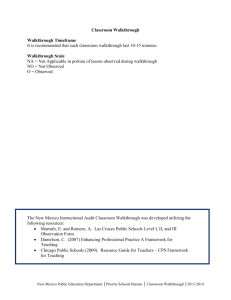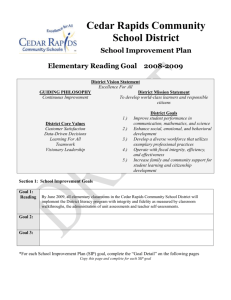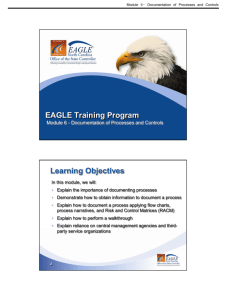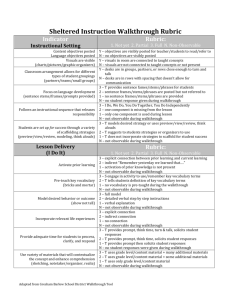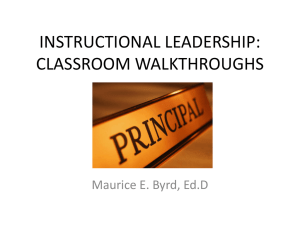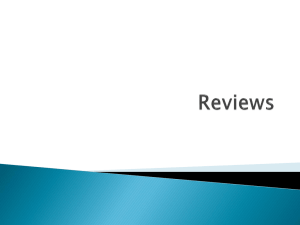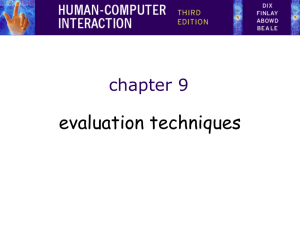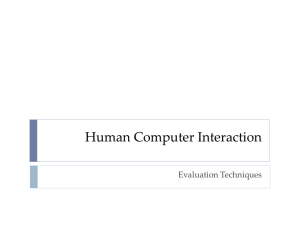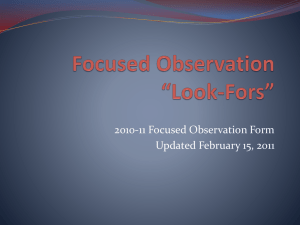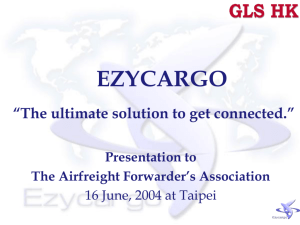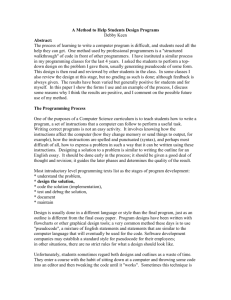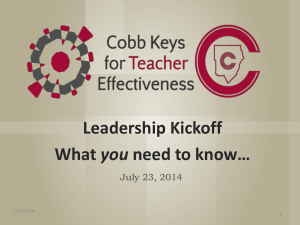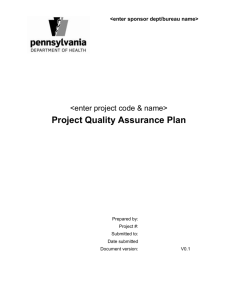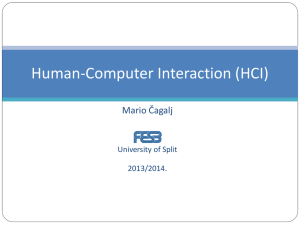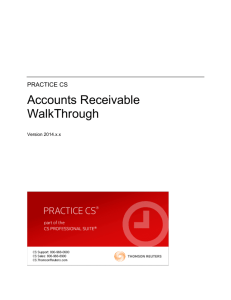OBSERVATION FRUSTRATIONS
advertisement
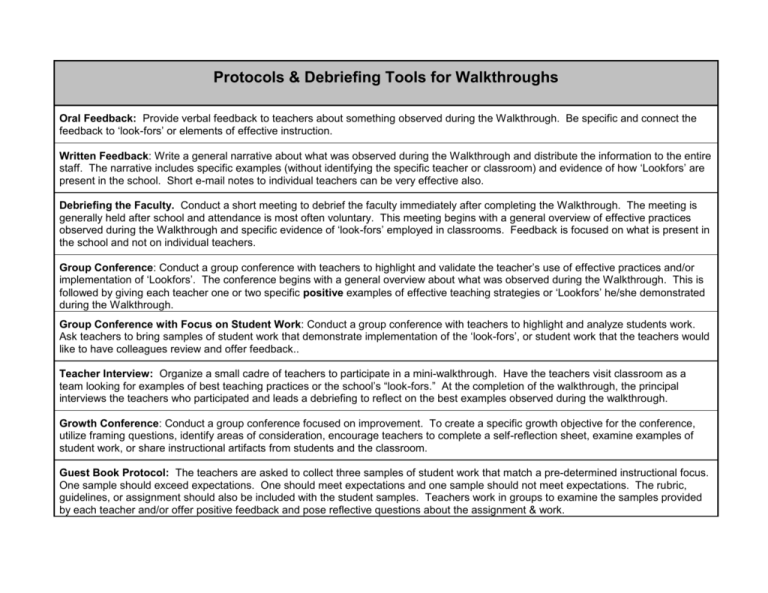
Protocols & Debriefing Tools for Walkthroughs Oral Feedback: Provide verbal feedback to teachers about something observed during the Walkthrough. Be specific and connect the feedback to ‘look-fors’ or elements of effective instruction. Written Feedback: Write a general narrative about what was observed during the Walkthrough and distribute the information to the entire staff. The narrative includes specific examples (without identifying the specific teacher or classroom) and evidence of how ‘Lookfors’ are present in the school. Short e-mail notes to individual teachers can be very effective also. Debriefing the Faculty. Conduct a short meeting to debrief the faculty immediately after completing the Walkthrough. The meeting is generally held after school and attendance is most often voluntary. This meeting begins with a general overview of effective practices observed during the Walkthrough and specific evidence of ‘look-fors’ employed in classrooms. Feedback is focused on what is present in the school and not on individual teachers. Group Conference: Conduct a group conference with teachers to highlight and validate the teacher’s use of effective practices and/or implementation of ‘Lookfors’. The conference begins with a general overview about what was observed during the Walkthrough. This is followed by giving each teacher one or two specific positive examples of effective teaching strategies or ‘Lookfors’ he/she demonstrated during the Walkthrough. Group Conference with Focus on Student Work: Conduct a group conference with teachers to highlight and analyze students work. Ask teachers to bring samples of student work that demonstrate implementation of the ‘look-fors’, or student work that the teachers would like to have colleagues review and offer feedback.. Teacher Interview: Organize a small cadre of teachers to participate in a mini-walkthrough. Have the teachers visit classroom as a team looking for examples of best teaching practices or the school’s “look-fors.” At the completion of the walkthrough, the principal interviews the teachers who participated and leads a debriefing to reflect on the best examples observed during the walkthrough. Growth Conference: Conduct a group conference focused on improvement. To create a specific growth objective for the conference, utilize framing questions, identify areas of consideration, encourage teachers to complete a self-reflection sheet, examine examples of student work, or share instructional artifacts from students and the classroom. Guest Book Protocol: The teachers are asked to collect three samples of student work that match a pre-determined instructional focus. One sample should exceed expectations. One should meet expectations and one sample should not meet expectations. The rubric, guidelines, or assignment should also be included with the student samples. Teachers work in groups to examine the samples provided by each teacher and/or offer positive feedback and pose reflective questions about the assignment & work. Teacher Reflection on Classroom: Conduct a walkthrough of a teacher classroom and ask the teacher to analyze his or her own classroom. What in the classroom promotes teaching and learning [models of good work, routines and procedures, organization of the room, learning stations in the room, samples of students’ work, etc]? Use videotape or self-reflection sheet to record the teacher’s selfanalysis. Teacher Walkthroughs: Organize teachers into small groups. Groups can be organized by grade or content level and/or cross content and grade levels. Work with each group of teachers to identify a focus for the walkthrough [what will be the “look-fors” during this walkthrough]. Create the time for the teachers to walkthrough as a group visiting four or five classrooms. The purpose should be to collect evidence of how teachers are implementing the look-fors in individual classrooms. Conduct a follow-up debriefing where teachers can discuss the positive examples they observed and share strategies that could improve implementation of look-fors. Teachers Examining Student Work as a Learning Community: Engage a small team [4-6] teachers in a walkthrough focused on student work. Ask each teacher to bring three sample of student work to a debriefing conference. Using the appropriate protocol, ask teachers to answer the following questions related to the students’ work. Which of these pieces of student work is the strongest and why? Which of these pieces of student work is the weakest and why? This protocol encourages teachers to analyze the key similarities and difference in students’ performance on the same assignment and to determine what adaptations are needed to make all students more successful. Student Walkthrough: Organize a group of students. Have them conduct a walkthrough of classrooms. The purpose should be to collect evidence of how teachers are implementing the look-fors in individual classrooms and to identify teaching strategies that help them learn and mater content. The student walkthroughs can be organized around a specific content area or grade level or by a general tour of multiple classrooms. Each student is asked to identify one strategy they believe promotes better learning and to provide one piece of evidence to the teacher. During the debriefing, teachers are welcome to come and listen to the students observations. Establishing clear expectations for this type of walkthrough is critical. Clear expectations for this type of walkthrough might include: identifying a specific focus and look-fors, using prescribed strategies for collecting data, establishing procedures for confidentiality and giving feedback. This type of walkthrough is an important piece in opening the instructional environment of the school to all stakeholders. Audio File: Record an audio file of your observation. Highlight key elements of the lesson and describe best pratices for teacher or learning strategies observed. Share specific examples to support what you say and describe the impact that you observed on students. Send the audio file to the teacher. Clinical Supervision Conference: Conduct a one-on-one conference with a teacher to reflect on the teacher’s performance or the performance of his/her students. Study Groups: Form small learning communities. Provide the time and resources for teachers to meet and discuss instruction and learning. Study groups can explore new strategies/research, share best practices and engage in action research projects in classrooms. Other Tools: Videotape lessons; prepare professional portfolios; share teaching artifacts; review teacher’s lesson plans; devise projects. 2 3
